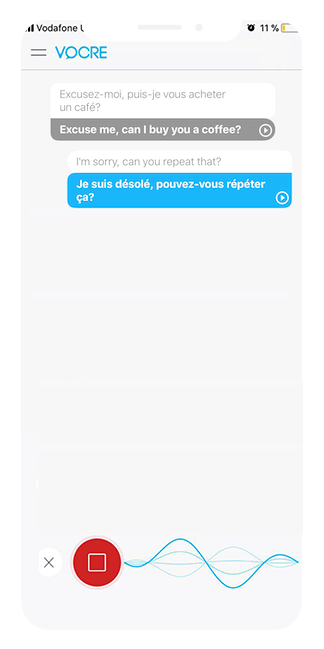
Excusez-moi puis-je vous acheter un café
Excuse me, can I buy you a coffee?

I'm sorry, can you repeat that?
Je suis désolé, pouvez-vous répéter?

“Translate on Your iPhone in Real-Time using Vocre”










Learning a new language? You may have encountered some common problems with translation...
February, 04
Learn moreInternational travel planning is a must these days. Traveling abroad is an adventure, but make no mistake about it: You’ve got to be prepared. This is truer...
February, 01
Learn moreLearn how to say good morning in Greek, when to say it, and what to...
January, 21
Learn moreFill out the form below